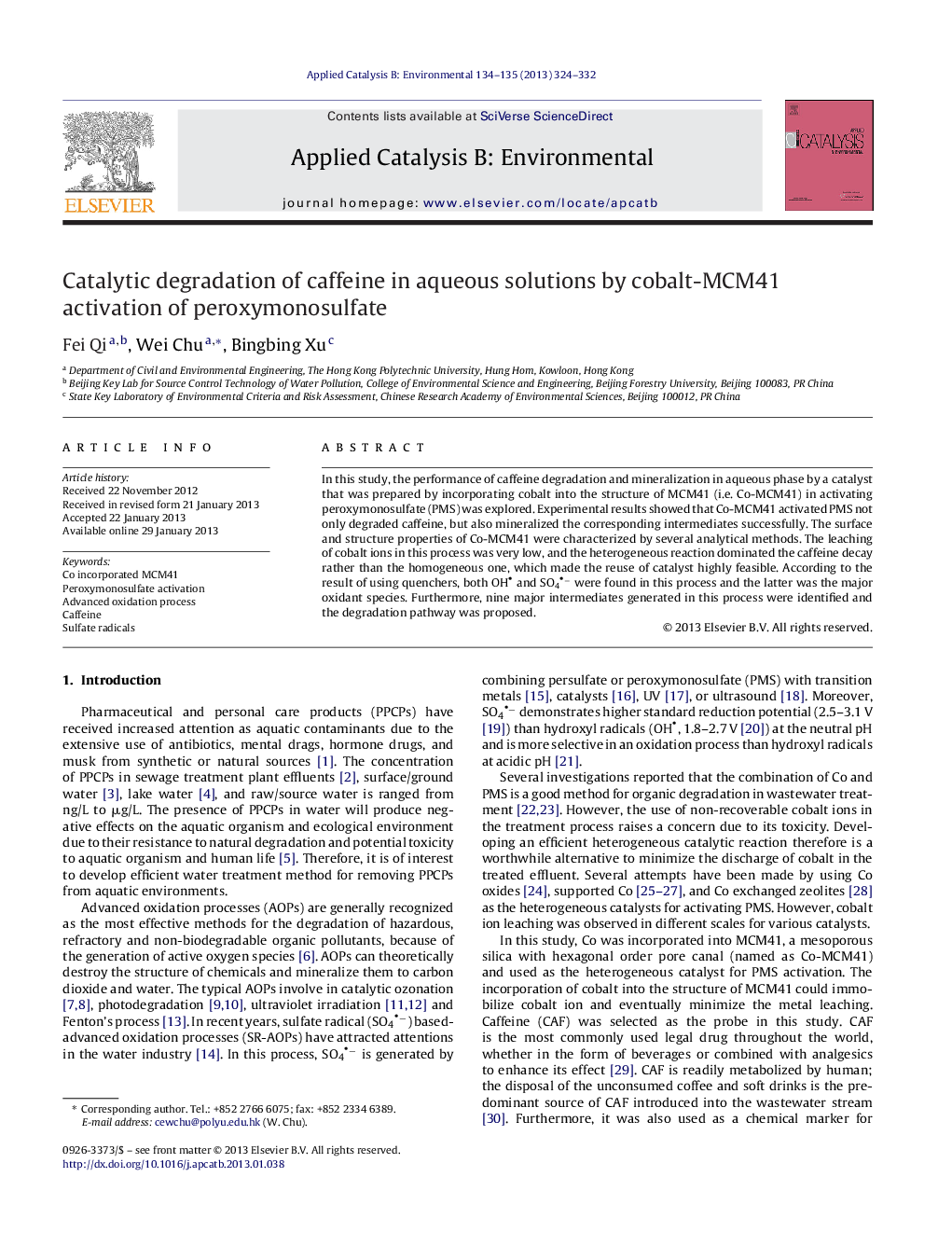| Article ID | Journal | Published Year | Pages | File Type |
|---|---|---|---|---|
| 45798 | Applied Catalysis B: Environmental | 2013 | 9 Pages |
In this study, the performance of caffeine degradation and mineralization in aqueous phase by a catalyst that was prepared by incorporating cobalt into the structure of MCM41 (i.e. Co-MCM41) in activating peroxymonosulfate (PMS) was explored. Experimental results showed that Co-MCM41 activated PMS not only degraded caffeine, but also mineralized the corresponding intermediates successfully. The surface and structure properties of Co-MCM41 were characterized by several analytical methods. The leaching of cobalt ions in this process was very low, and the heterogeneous reaction dominated the caffeine decay rather than the homogeneous one, which made the reuse of catalyst highly feasible. According to the result of using quenchers, both OH and SO4− were found in this process and the latter was the major oxidant species. Furthermore, nine major intermediates generated in this process were identified and the degradation pathway was proposed.
Graphical abstractCobalt was incorporated into the structure of MCM41 (i.e. Co-MCM41). As a catalyst, Co-MCM41 not only activated PMS to degraded caffeine, but also mineralizes the corresponding intermediates. Less cobalt leaching was observed, indicating that the heterogeneous reaction dominated the caffeine decay rather than the homogeneous one that made the reuse of catalyst highly feasible. Furthermore, nine major intermediates generated in this process were identified and the degradation pathway was proposed. Among detected intermediates, three were firstly detected as intermediates of caffeine.Figure optionsDownload full-size imageDownload as PowerPoint slideHighlights► Co-MCM41/peroxymonosulfate exhibited an effective performance and low leaching. ► The heterogeneous reaction dominated the caffeine decay. ► Intermediates and pathway of caffeine were identified.
